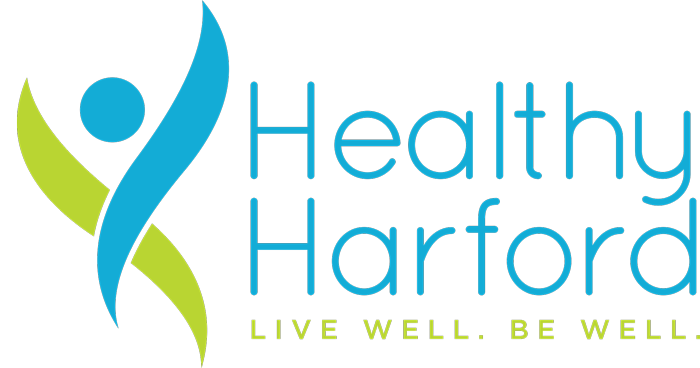Suicide & Prevention
Suicide is the leading cause of violent death in the US, and one of the top 10 causes of death overall for Americans. According to the Injury Prevention journal, over the last decade, 399,157 Americans died by suicide, of which 201,875—approximately 50%—died by firearm suicide.
Nationwide suicide rates are on the rise in almost every state. According to the 2020 RWJF County Health Rankings, in Harford County suicides deaths are three times higher than homicide deaths. Most suicides are attributed primarily to firearms and unintentional overdoses.
The national Healthy People 2030 sets reducing suicide rates to 12.8 suicides per 100,000 by 2030. (National Vital Statistics System-Mortality) In 2018, the most recent year for which we have data, Harford County’s suicide rate was 17.3 per 100,000 or 44 deaths.
Currently Maryland lacks a State Suicide Fatality Review Board. Legislation was introduced in 2020 to create one, but it failed in committee. Legislation was been reintroduced in 2021. The bill supports – Establishing the Maryland Suicide Fatality Review Committee to identify and address the factors contributing to suicide deaths and facilitate system changes in the State to prevent suicide deaths; requiring the Committee to meet at least quarterly each year, report at least annually to the Governor and the General Assembly on certain matters, perform certain annual studies, and disseminate certain findings and recommendations to policymakers, health care providers, health care facilities, and the public; etc.
If such legislation is passed, it will hopefully help counties receive suicide information, such as actual totals and contributing factors for death, in a more timely manner. This will enable local suicide prevention efforts to work with current data, instead of the two year old data presently available.
WHO IS AFFECTED?
Significant risk factors for suicide include mental health disorders, addiction issues, stress, bullying, loss, serious health conditions, abuse/neglect, childhood trauma, family history, and access to lethal means like firearms or drugs. According to the CDC’s National Violent Death Reporting System, data from 27 states in 2015 revealed the following causes:
- Relationship problem (42%)
- Problematic substance use (28%)
- Crisis in the past or upcoming two weeks (29%)
- Criminal legal problem (9%)
- Physical health problem (22%)
- Loss of housing (4%)
- Job/Financial problem (16%)
Populations with disproportionately high suicide rates include:
- Males
- Whites and American Indian/Alaska Natives:
- Older adults: By age and gender, the highest suicide rate is among males ages 65 and older, then ages 45 to 54. Among females, those ages 45-54 had the highest rate, followed by those ages 55-64.
- Veterans: Suicide rates among veterans were 1.5 times greater than non-veterans, after adjusting for age and gender in 2016.
- Those living in rural areas
- LGBTQ adults and youth
America’s Health Rankings, United Health Foundation 2019
WHAT WORKS?
Strategies to reduce suicide include:
- Quick access to care – The Klein Family Center Hotline 1.800.NEXT.STEP can answer questions 24 hours a day, 7 days a week. They can also send a mobile crisis team for those in crisis. The Center is also open for urgent care/walk-in services from 9:00 am to 9:00 pm at 802 Baltimore Pike, Bel Air. Outpatient services are available daily by appointment from 8:00 am to 4:30 pm.
- Universal screening at emergency rooms and doctor’s offices to identify patients at higher risk of suicide.
- Education – Harford County has a number of free classes to help people better understand mental illness, the signs of those in need, and how to interact with those that you feel may be at risk of suicide. The free 8 hour Mental Health First Aid class, and the 1 hour Question, Persuade, Refer QPR classes are offered periodically a various locations through out the county. Please check the Healthy Harford calendar of events for up coming classes.
- Reducing access to lethal means including access to firearms, lethal doses of medications and alcohol to reduce fatal suicide attempts. Evidence from studies over the past two decades shows a strong association between the presence of a firearm in the home and an increased risk of suicide for the gun owner and the gun owner’s spouse and children. One such program is the Gun Shop Project which builds partnerships between firearms business and public health experts to provide firearm suicide prevention educational materials to firearms retailers, instructors and customers. Maryland participates in this program and has a brochure that gun sellers can distribute to their clients.
Local Mental Health and Suicide Issues in the News
Bel Air Parent Who Apparently Killed 3 Year Old Son and Self October 2020
Three Recent murder suicides in Harford County November 2020
Del. Reilly says School Psychologists Have Become More Important to Students Than Ever – January 2021
Suspicious Death in Jarrettsville ruled murder suicide November 2020
Edgewood Couple found Dead After Apparent Murder Suicide – November 2020
Murder Suicide in Street – May 2018



